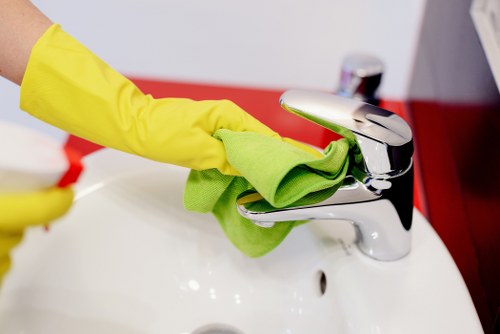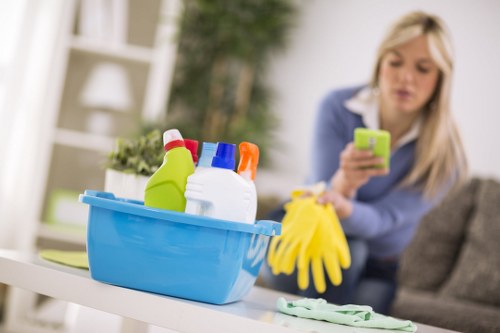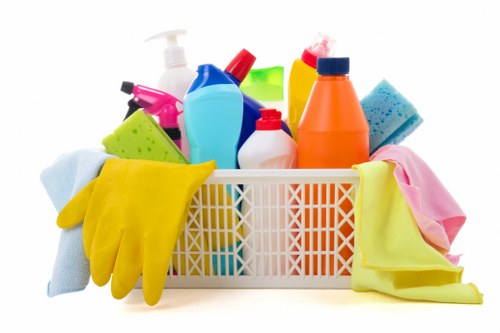Upholstery Cleaning in Carpet Steam Cleaner
Introduction to Upholstery Cleaning

Maintaining clean upholstery is essential for both the aesthetics and longevity of your furniture. Upholstery, being a popular choice for sofas, chairs, and other home furnishings, can accumulate dirt, stains, and allergens over time. Regular cleaning not only enhances the appearance but also ensures a healthier living environment.
One of the most effective methods for upholstery cleaning is using a carpet steam cleaner. These versatile machines are designed to deep clean various fabric types, removing embedded dirt and revitalizing the material.
In this article, we will explore the benefits of using a carpet steam cleaner for upholstery, provide step-by-step cleaning guides, and offer tips to maintain your furniture's pristine condition.
Benefits of Using a Carpet Steam Cleaner for Upholstery

Carpet steam cleaners are not just for carpets; they are highly effective for upholstery cleaning as well. Here are some of the key benefits:
- Deep Cleaning: Steam cleaners penetrate deep into the fabric, lifting and removing dirt, stains, and allergens.
- Eco-Friendly: They often require minimal or no chemical cleaners, making them an environmentally friendly option.
- Sanitization: The high-temperature steam kills bacteria, dust mites, and other harmful microorganisms.
- Versatility: Suitable for a variety of fabrics, including cotton, polyester, leather, and microfiber.
- Cost-Effective: Investing in a steam cleaner can save money in the long run by reducing the need for professional cleaning services.
Choosing the Right Carpet Steam Cleaner for Upholstery

Selecting the appropriate steam cleaner is crucial for effective upholstery cleaning. Consider the following factors when choosing a machine:
- Adjustable Steam Settings: Ensure the cleaner has adjustable steam levels to accommodate different fabric types without causing damage.
- Attachments and Accessories: Look for specialized upholstery tools, such as brush attachments and crevice tools, that make the cleaning process easier.
- Portability: A lightweight and portable cleaner allows for easy maneuverability around furniture and tight spaces.
- Capacity: Choose a steam cleaner with an adequate water tank size to support extended cleaning sessions without frequent refills.
- Ease of Use: Features like intuitive controls and ergonomic design enhance the user experience.
Step-by-Step Guide to Upholstery Cleaning with a Steam Cleaner

Cleaning your upholstery with a carpet steam cleaner involves several steps to ensure thorough and safe results. Follow this guide for optimal cleaning.
1. Preparation
Before you begin, remove all cushions and accessories from the furniture. Vacuum the upholstery thoroughly to eliminate loose dirt and debris, paying special attention to crevices and seams.
2. Spot Treatment
Identify any stains or heavily soiled areas. Apply a suitable upholstery pre-treatment or stain remover, allowing it to sit for the recommended time to break down the stains.
3. Setting Up the Steam Cleaner
Fill the steam cleaner's water tank with hot water as per the manufacturer's instructions. Attach the appropriate upholstery tool, such as a fabric brush or nozzle, to the cleaner.
4. Steam Cleaning
Begin steaming the upholstery, working in small sections. Use smooth, overlapping strokes to ensure even coverage. Avoid over-saturating the fabric, which can lead to mold or mildew growth.
5. Drying
After steaming, allow the upholstery to dry completely. Open windows or use fans to expedite the drying process. Ensure the furniture is fully dry before using it again to prevent any moisture-related issues.
6. Final Inspection
Once dry, inspect the upholstery for any remaining stains or spots. Repeat the cleaning process on any stubborn areas if necessary.
Tips for Maintaining Clean Upholstery

Maintaining upholstery cleanliness extends the life of your furniture and keeps it looking fresh. Here are some essential maintenance tips:
- Regular Vacuuming: Vacuum your upholstery at least once a week to remove loose dirt and prevent buildup.
- Immediate Stain Removal: Address spills and stains promptly to prevent them from setting into the fabric.
- Use Protective Covers: Employ slipcovers or throws to protect your furniture from everyday wear and tear.
- Avoid Direct Sunlight: Position furniture away from direct sunlight to prevent fabric fading and deterioration.
- Rotate Cushions: Periodically rotate and flip cushions to ensure even wear and maintain comfort.
By following these maintenance practices, you can keep your upholstery looking new and extend its lifespan significantly.
Professional Cleaning Services
While DIY methods are effective, sometimes professional upholstery cleaning services might be necessary, especially for stubborn stains or delicate fabrics. Professionals have specialized equipment and expertise to handle various cleaning challenges.
However, using a carpet steam cleaner at home provides a cost-effective and convenient alternative for routine cleaning needs.
Advantages Over Traditional Cleaning Methods

Carpet steam cleaners offer several advantages compared to traditional upholstery cleaning methods:
- Speed: Steam cleaning is quicker than manual scrubbing, saving you time and effort.
- Efficiency: The high-temperature steam effectively removes deep-seated dirt and kills bacteria without the need for harsh chemicals.
- Odor Elimination: Steam cleaning helps eliminate unpleasant odors by removing the sources rather than just masking them.
- Eco-Friendly: Reduced reliance on chemical cleaners makes steam cleaning a more environmentally responsible choice.
- Versatility: Carpet steam cleaners can be used on multiple surfaces, providing value for your investment.
Common Challenges and Solutions
While steam cleaning is highly effective, users might encounter certain challenges. Here are some common issues and their solutions:
1. Fabric Sensitivity
Some fabrics may be sensitive to high temperatures. To avoid damage, always check the manufacturer's care instructions and use the lowest effective steam setting.
2. Residual Moisture
Excess moisture can lead to mold and mildew. Ensure proper ventilation during and after cleaning, and do not over-wet the fabric.
3. Stubborn Stains
For tough stains, multiple cleaning passes may be necessary. Additionally, pre-treating stains with a suitable remover before steaming can enhance results.
4. Equipment Maintenance
Regularly clean and maintain your steam cleaner to ensure optimal performance. Descale the machine as needed and replace any worn-out parts promptly.
5. Uneven Cleaning
Move the steam cleaner consistently and evenly across the upholstery to avoid patchy results.
Environmental Considerations
Using a carpet steam cleaner is a more sustainable choice compared to traditional cleaning methods that rely heavily on chemicals. Steam cleaning uses primarily water, reducing the chemical runoff into the environment.
Additionally, because steam cleaners are versatile and can be used for multiple cleaning tasks, it minimizes the need for multiple cleaning appliances, further decreasing your environmental footprint.
Opting for energy-efficient models also contributes to lower energy consumption, making steam cleaning an eco-friendly option for maintaining your upholstery.
Cost Analysis
Investing in a carpet steam cleaner can lead to significant savings over time. Here's a breakdown of the cost benefits:
- Initial Investment: A quality steam cleaner may have a higher upfront cost, but it eliminates the recurring expenses of professional cleaning services.
- Longevity of Furniture: Regular cleaning extends the life of your upholstery, delaying the need for replacements or costly repairs.
- Energy Efficiency: Modern steam cleaners are designed to be energy-efficient, reducing utility costs.
- Versatility: A steam cleaner's ability to clean multiple surfaces maximizes its value, providing more utility for your investment.
Overall, the cost savings associated with owning a carpet steam cleaner make it a wise investment for both your wallet and your home.
Comparing DIY vs. Professional Cleaning Costs
While DIY steam cleaning involves the initial purchase of equipment, professional cleaning can become expensive with frequent use. DIY provides the flexibility to clean whenever needed without additional costs, making it a cost-effective solution in the long run.
Safety Precautions
Ensuring safety during upholstery cleaning with a steam cleaner is paramount. Follow these precautions to prevent accidents and damage:
- Read the Manual: Always read the manufacturer's instructions to understand the proper use of your steam cleaner.
- Test on a Small Area: Before cleaning the entire piece of furniture, test the steam cleaner on a hidden area to check for any adverse reactions.
- Protect Yourself: Wear gloves and eye protection to shield yourself from hot steam and potential splashes.
- Avoid Over-Wetting: Do not saturate the fabric, as excessive moisture can damage the upholstery and promote mold growth.
- Unplug When Not in Use: Always unplug the steam cleaner after use to prevent electrical hazards.
Proper Handling of the Steam Cleaner
Handle the steam cleaner carefully, especially when moving it around furniture. Ensure that the steam cleaner is turned off and cooled down before storing it to avoid burns or other injuries.
Frequently Asked Questions
Here are some common questions about upholstery cleaning with carpet steam cleaners:
1. Can I Use a Carpet Steam Cleaner on Leather Upholstery?
Yes, many steam cleaners have settings and attachments suitable for leather. However, it's essential to use the appropriate temperature and avoid over-wetting to prevent damage.
2. How Often Should I Steam Clean My Upholstery?
For optimal maintenance, it's recommended to steam clean your upholstery every six months. However, high-traffic areas or households with pets and children may require more frequent cleaning.
3. Will Steam Cleaning Remove All Stains?
While steam cleaning is highly effective, some deeply ingrained or old stains may require specialized treatments or professional intervention for complete removal.
4. Is Steam Cleaning Safe for All Fabric Types?
Most fabrics can be safely steam cleaned, but it's always best to check the care instructions or test a small area first to ensure compatibility.
5. What Should I Do If My Upholstery Still Smells After Cleaning?
If odors persist after steam cleaning, consider using odor-neutralizing sprays or consulting a professional to identify and address the root cause.
Conclusion
Upholstery cleaning is a vital aspect of home maintenance that enhances both the look and hygiene of your living spaces. Utilizing a carpet steam cleaner presents a powerful, efficient, and eco-friendly solution for keeping your furniture in pristine condition.
By following the proper cleaning techniques and maintenance tips outlined in this article, you can extend the life of your upholstery, maintain a healthy environment, and enjoy a fresh and inviting home.
Ready to transform your upholstery? Contact us today to learn more about our carpet steam cleaning services or book your service now to experience professional-grade cleaning at your doorstep!
Frequently Asked Questions
Get In Touch With Us.
Please fill out the form below to send us an email and we will get back to you as soon as possible.